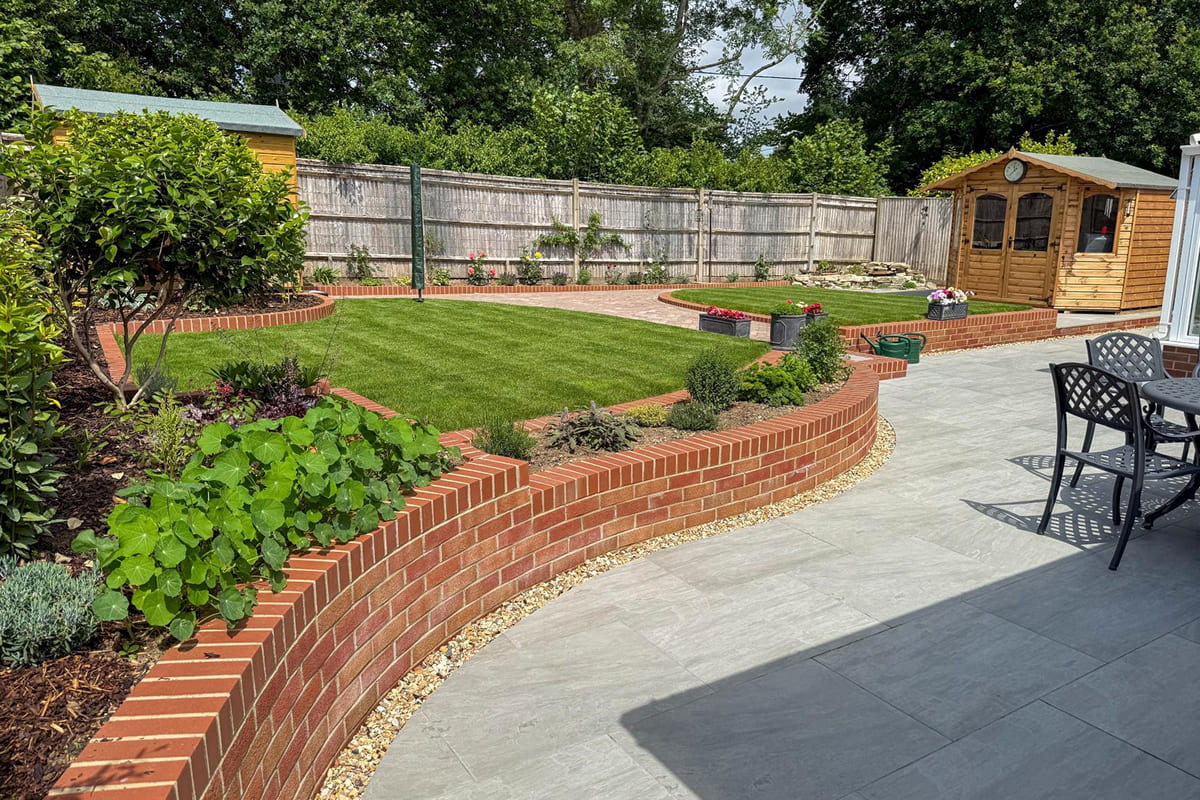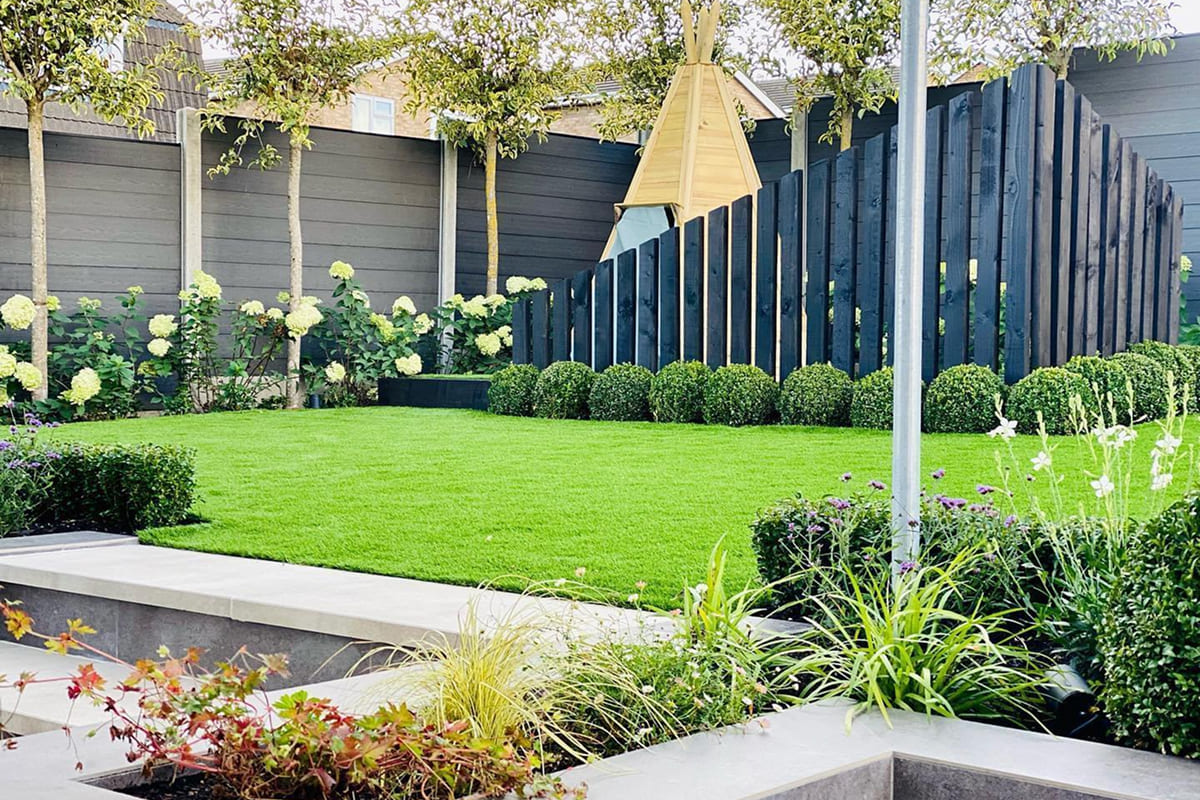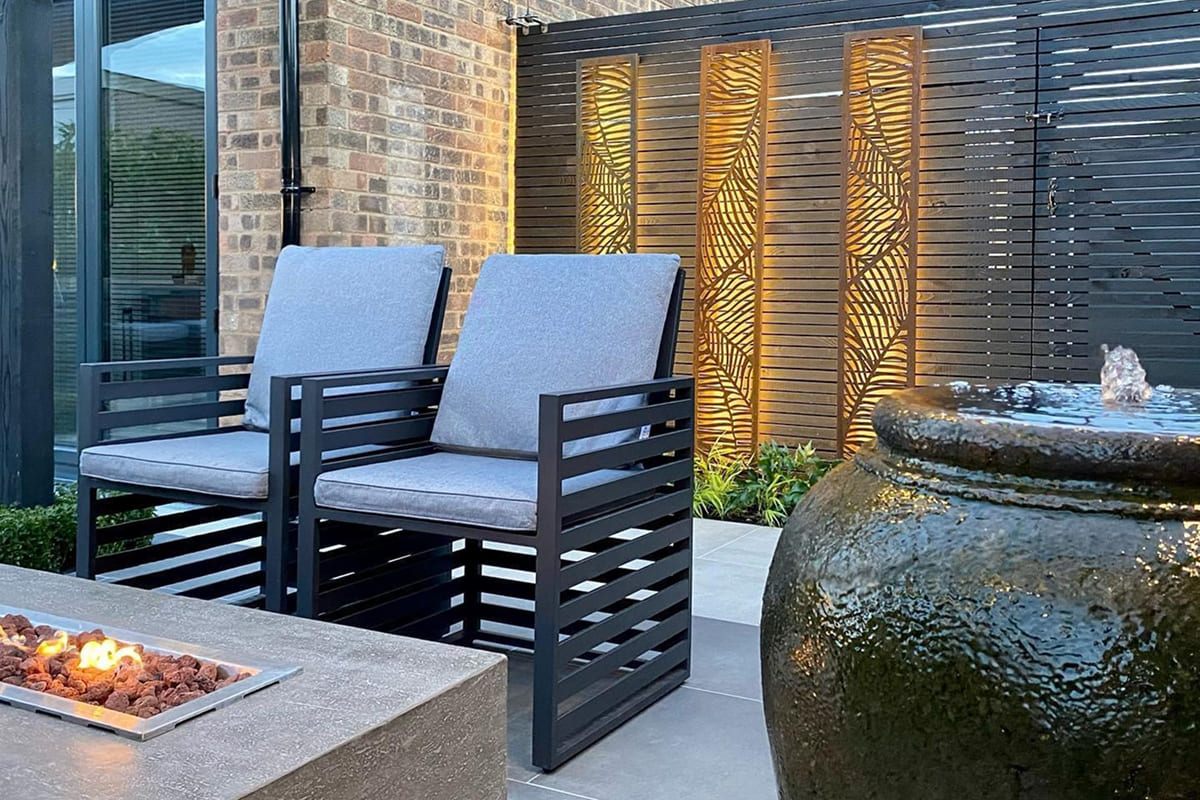Creating a stunning outdoor space requires more than just planting flowers and mowing the lawn. A professional garden designer brings expertise, creativity, and technical knowledge to transform your garden into a beautiful, functional sanctuary that reflects your lifestyle and enhances your property’s value.
What’s surprising to many is how accessible and user-friendly the process can be, even for those new to garden design. With the right guidance, you can achieve professional results that exceed expectations.
Whether you’re starting from scratch with a bare plot or looking to revitalise an existing garden, working with an experienced designer ensures your outdoor space reaches its full potential. From selecting the right plants for your soil and climate to creating seamless transitions between indoor and outdoor living areas, professional garden design services deliver results that DIY approaches simply can’t match.
Many homeowners underestimate the complexity involved in creating a cohesive garden design. Considerations like drainage, seasonal interest, mature plant sizes, and ongoing maintenance requirements require specialist knowledge. TM Landscapes understands these challenges and has helped countless homeowners across the region and throughout the UK create outdoor spaces that exceed their expectations whilst staying within budget and timeline constraints.
Professional garden designers combine artistic vision with horticultural expertise, ensuring your investment delivers both immediate visual impact and long-term satisfaction. The difference between a professionally designed garden and a DIY attempt becomes apparent within months—and only grows more pronounced over time. A well-designed garden can significantly enhance your quality of life, reflecting important life changes, personal fulfilment, and your unique perspective.

Garden design is both an art and a science, dedicated to shaping outdoor spaces that are as functional as they are beautiful. At its core, garden design involves thoughtfully combining hard landscaping elements—such as patios, pathways, and walls—with a diverse palette of plants to create a harmonious environment that reflects the user’s personal style and needs. Leading garden designers, including those who have earned acclaim at the RHS Chelsea Flower Show, bring a wealth of expertise to every project, ensuring that each garden is not only visually stunning but also sustainable and practical for everyday life.
The process of garden design begins with a vision and is brought to life through careful planning and attention to detail. Designers use a variety of tools, including advanced garden design software, to develop comprehensive garden plans that capture every element—from the layout of flower beds to the placement of trees and water features.
This allows clients to visualise their future garden and make informed decisions before any work begins. Whether you’re dreaming of a tranquil retreat or a vibrant space for entertaining, garden design is about creating outdoor spaces that enhance your lifestyle and connect you with nature. With the right approach, any garden—large or small—can be transformed into a unique landscape that brings joy and inspiration for years to come.
A professional garden designer begins every project by carefully assessing your space, lifestyle needs, and aesthetic preferences. They analyse factors like soil conditions, drainage patterns, existing structures, and microclimates within your garden to create a comprehensive plan that maximises every square metre.
As a fundamental step in the design process, designers draw formal sketches or drawings to develop and communicate their concepts. These visualisations help you visualise the final garden, allowing you to see how different elements, colours, and textures will come together. A flexible garden plan serves as an editable blueprint for the project, making it easy to customise, redraw, and enhance the design before moving on to technical drawings and construction planning.
Selecting appropriate plants requires understanding growth habits, seasonal characteristics, soil preferences, and maintenance requirements. Professional designers choose plants that will thrive in your specific conditions whilst creating year-round interest through careful consideration of flowering times, foliage colours, and structural elements. Selecting shrubs and trees as essential elements adds structure and interest to the garden.
The positioning of plants within your garden affects everything from visual balance to practical maintenance access. Designers consider mature sizes, growth rates, and compatibility between different species to create harmonious plant communities that support each other’s growth, while also choosing plants that suit the specific environment and personal taste.
It is important to take note of site conditions and existing features during the initial assessment.
Successful garden design seamlessly integrates hard landscaping elements like patios, pathways, and retaining walls with soft landscaping features such as planted borders, lawns, and water features. Brick is a popular material for patios, pathways, or walls, adding both visual appeal and structure to the landscape. This balance creates structure whilst maintaining the natural beauty that makes gardens so appealing.
Professional designers understand construction principles and can specify appropriate materials and techniques for features like drainage systems, foundations, and structural elements. Working closely with builders, such as carpenters and landscapers, ensures that technical and structural elements are properly executed and seamlessly integrated into the design. Each object, such as a bench or planter, is carefully selected and placed to enhance the overall design. This technical knowledge prevents costly problems and ensures your garden’s longevity.

Professional garden designers possess years of training and experience that help avoid common mistakes that cost homeowners thousands in corrections. They understand which plants will thrive in your conditions, how to solve drainage issues, and which materials offer the best value for your investment. Designers often use specialised software to create accurate plans and visualisations, making it easier to customise layouts and preview your garden before installation. You can also download design resources or mobile apps to assist with planning, adding convenience and accessibility to the process.
Their established relationships with suppliers often mean better prices on plants and materials, whilst their project management skills keep installations on schedule and within budget. The initial investment in professional design frequently pays for itself through avoided mistakes and negotiated supplier costs.
Creating a comprehensive garden design requires substantial time investment in research, planning, sourcing materials, and coordinating tradespeople. Modern design software streamlines this process by allowing users to drag and drop elements, making it easy to quickly adjust layouts. Professional designers handle these tasks efficiently, drawing on their existing knowledge and established supplier networks.
Most homeowners underestimate the time required for successful garden projects. Professional designers provide realistic timelines and manage all aspects of implementation, developing the project from initial concept to final implementation, allowing you to enjoy the process rather than feeling overwhelmed by logistics.
Well-designed gardens significantly boost property values, with estate agents consistently reporting higher sale prices for homes with attractive outdoor spaces. Professional garden designers can handle projects of any scale, from small gardens to large landscapes, creating lasting value that continues to appreciate over time as plants mature and establish.
The curb appeal created by professional garden design makes properties more attractive to potential buyers and helps homes sell faster when the time comes. Well-designed landscapes, whether traditional or contemporary, have broad appeal and can be a key selling point for buyers. This return on investment often exceeds the initial design and installation costs.
Professional garden designers excel at translating your vision into reality whilst incorporating practical considerations you might not have considered. They balance your aesthetic preferences with functional requirements like entertaining areas, children’s play spaces, and storage solutions, ensuring the garden reflects the homeowner’s individual taste.
Every garden design should reflect the homeowner’s lifestyle and preferences whilst working harmoniously with the existing architecture and surrounding landscape. With the ability to customise every aspect of the design to suit your unique needs, professional designers have the skills to create truly bespoke solutions that feel uniquely yours.
Initial consultations involve detailed discussions about your vision, lifestyle requirements, and budget parameters. Professional designers ask targeted questions to understand how you use your outdoor space and what improvements would enhance your enjoyment most significantly. At each key point in the planning process, important decisions are made about design direction and potential changes.
The design development process typically includes site surveys, concept sketches, detailed plans, and 3D visualisations that help you understand the proposed design before any physical work begins. The word to remember here is ‘collaboration’—garden design is a partnership between you and your designer to achieve the best outcome. This thorough planning prevents misunderstandings and ensures the final result matches your expectations.
Professional garden designers coordinate the installation of structural elements, including patios, decking, pathways, retaining walls, and water features. They ensure these hard landscaping features are seamlessly integrated with the house and surrounding architecture. They understand building regulations, drainage requirements, and material specifications necessary for long-lasting installations.
Quality hard landscaping provides the foundation for successful garden design, creating functional spaces for outdoor living whilst establishing the framework around which plants and soft landscaping elements are arranged. Modern garden designs may also include pools as a luxurious feature, enhancing both the functionality and aesthetics of the outdoor space.
Planting design involves much more than selecting attractive plants. Professional designers create planting schemes that provide year-round interest, support local wildlife, and evolve beautifully as they mature. They consider factors like bloom times, foliage textures, and seasonal changes to ensure your garden looks stunning throughout the year.
Lawn installation, border preparation, and seasonal planting require specific techniques and timing for optimal results. Professional designers ensure these elements are installed correctly and provide guidance on ongoing care requirements.
Modern garden design increasingly emphasises sustainability through water-efficient plant selections, rain gardens, composting systems, and wildlife-friendly features. Professional designers stay current with sustainable practices and can create beautiful gardens that support environmental conservation.
Low-maintenance design approaches reduce ongoing care requirements whilst maintaining visual appeal. This involves selecting appropriate plants, installing efficient irrigation systems, and creating designs that age gracefully with minimal intervention.

Successful landscape design is rooted in a deep understanding of the site and its unique characteristics. Garden designers begin by assessing essential factors such as soil quality, climate, sunlight, and existing features, ensuring that every design is tailored to the specific conditions of the space. This foundational knowledge guides the selection of plants and materials, helping to create gardens that are not only beautiful but also resilient and easy to maintain.
Beyond the technical aspects, landscape design is about crafting spaces that suit the way you live. Whether your garden is meant for relaxation, social gatherings, or family activities, the design should reflect your lifestyle and preferences. Designers consider the overall style and theme—be it modern, traditional, or naturalistic—and select features and plants that complement the vision.
Collaboration is key throughout the process, and with tools like Microsoft Teams, designers can easily connect with clients and other stakeholders, sharing ideas, drawings, and feedback in real time. By taking a holistic approach and focusing on both aesthetics and functionality, landscape design transforms ordinary gardens into extraordinary outdoor living spaces that enrich daily life.
Reviewing a designer’s portfolio reveals their style range, technical capabilities, and experience with projects similar to yours. Look for evidence of successful completion, attention to detail, and the ability to work within various budget ranges and site constraints.
Professional qualifications, industry memberships, and ongoing education demonstrate commitment to maintaining current knowledge and best practices. Established designers typically have relationships with trusted contractors and suppliers that benefit project outcomes.
Successful garden design projects require clear communication between the designer and client throughout the process. The right designer listens carefully to your requirements, asks thoughtful questions, and explains technical aspects in an accessible language.
During initial meetings, assess whether the designer understands your vision and can offer practical suggestions for improvement or alternative approaches. They should demonstrate enthusiasm for your project whilst providing honest feedback about feasibility and costs.
TM Landscapes has built a reputation for creative design solutions, exceptional quality, and reliable project delivery throughout the region. Their team combines extensive horticultural knowledge with practical construction experience, ensuring designs are both beautiful and buildable.
The company’s commitment to client satisfaction shows in their detailed design process, transparent pricing, and comprehensive project management. They work closely with homeowners throughout every stage, from initial concept through final installation and beyond.
Modern garden design emphasises clean lines, architectural plants, and sophisticated material palettes that complement contemporary architecture. These designs often feature geometric layouts, statement planters, and integration of technology like automated irrigation and lighting systems.
Minimalist approaches focus on quality over quantity, using fewer plant varieties with greater impact. This creates gardens that are both striking and manageable, perfect for busy homeowners who want maximum visual impact with minimal maintenance requirements.
Growing environmental awareness has increased demand for gardens that support local ecosystems whilst reducing resource consumption. Native plant gardens, pollinator-friendly borders, and rainwater harvesting systems create beautiful spaces that benefit wildlife and the environment.
Sustainable design practices include choosing drought-tolerant plants, implementing efficient irrigation systems, and creating habitats that support birds, butterflies, and beneficial insects. These approaches create gardens that are both environmentally responsible and visually stunning.
Modern homeowners increasingly view their gardens as outdoor rooms, complete with seating areas, dining spaces, and entertainment features. Fire pits, outdoor kitchens, and pergolas extend the usable season and create additional living space for families.
Water features, from simple fountains to elaborate ponds, add sensory interest and create focal points within garden designs. Professional designers ensure these elements integrate harmoniously with surrounding plantings whilst providing practical benefits like masking traffic noise.
Successful garden design provides interest throughout all seasons, not just during peak growing months. This involves selecting plants with attractive winter bark, evergreen structure plants, and features that remain beautiful even when dormant.
Seasonal planting schemes ensure continuous colour and interest, with spring bulbs, summer perennials, autumn foliage displays, and winter structure creating an ever-changing landscape that rewards observation throughout the year.

A career in garden design offers a world of creative and professional possibilities for those passionate about transforming outdoor spaces. Garden designers can choose from a variety of paths, from working independently as freelancers to joining established design studios or landscape architecture firms. Many professionals find their niche by specialising in residential gardens, commercial landscapes, or sustainable design practices that prioritise environmental responsibility.
Opportunities abound for garden designers to showcase their talents on prestigious stages such as the RHS Chelsea Flower Show, where innovative projects and creative vision are celebrated with accolades like the coveted gold medal. As demand for expertly designed gardens continues to grow, so do the prospects for those entering the field. Aspiring designers can build their careers by developing a strong portfolio, networking with clients and industry peers, and staying current with the latest trends and techniques.
Resources such as online courses, workshops, and professional organisations provide valuable support for skill development and career advancement. With dedication and a clear vision, garden designers can achieve rewarding careers that allow them to shape landscapes, inspire others, and leave a lasting mark on the world of garden design.
Professional garden design offers the perfect solution for homeowners who want beautiful, functional outdoor spaces without the stress and uncertainty of DIY approaches. The expertise, creativity, and technical knowledge that professional designers bring to projects ensure results that exceed expectations while providing lasting value.
Whether you’re planning a complete garden transformation or targeted improvements to specific areas, working with experienced professionals makes the process enjoyable and the results spectacular. The investment in professional design pays dividends through increased property value, reduced maintenance requirements, and enhanced outdoor living opportunities.
If you’re looking for a professional garden designer who combines creativity with practical expertise, TM Landscapes can help transform your outdoor space into the garden of your dreams. Their team of experienced designers works closely with each client to create bespoke solutions that reflect individual tastes whilst incorporating the latest design trends and sustainable practices.
Contact TM Landscapes today to schedule your initial consultation and discover how professional garden design can transform your outdoor space into a beautiful, functional sanctuary that enhances your lifestyle and property value for years to come.
A garden designer plans and creates outdoor spaces by combining hard landscaping elements like patios and pathways with soft landscaping features such as plants and lawns. They assess site conditions, understand client requirements, and create comprehensive designs that balance aesthetics, functionality, and sustainability to deliver beautiful, practical gardens.
Garden design costs vary significantly depending on garden size, complexity, and the scope of services required. Most professional designers provide bespoke quotes after an initial consultation where they assess your space and requirements. Investment in professional design often pays for itself through avoided mistakes and enhanced property value.
Project timelines depend on garden size and complexity. Small garden makeovers typically require 2-4 weeks for design development and 1-3 weeks for installation. Larger, more complex projects may take several months from initial consultation through final completion, including time for planning permissions if required.
Yes, professional garden designers excel at creating visually appealing gardens that require minimal ongoing maintenance. They achieve this through careful plant selection, efficient irrigation systems, and design approaches that reduce weeding, pruning, and replacement requirements whilst maintaining year-round beauty and interest.